Useful Information
about textile floor coverings
Wissenswertes
im Rahmen der GUT-Produktprüfung
Here you will find important information about textile floor coverings: How to choose the right carpet, how to clean and maintain it, as well as general information about textile floor coverings.
Carpet types
Textile floor coverings
Carpets are textile floor coverings which, according to DIN ISO 2424, are products with a surface layer of textile fibres and which are generally used to cover the floor. Different types of carpet are available for different areas of application.
Wall-to-wall carpet:
Wall-to-wall carpet is usually defined as a textile floor covering that covers the entire floor of a room.
Rug:
A rug is a textile floor covering with a fixed shape and dimensions, and is generally not fixed to the floor.
Runner:
A runner is a long and narrow carpet often found in hallways or on stairs and is installed down the middle of the area leaving floorspace either side.
Carpet tiles:
Carpet tiles are modular textile floor coverings which cover the whole area of a room once they are installed.
Further classification possibilities for textile floor coverings
Textile floor coverings can also be identified according other differentiating factors.
Manufacturing process for carpets:
- Weaving – woven carpet
- Tufting – tufted carpet
- Needlepunched – needlepunched carpet
- Flocking – flocked carpet
- Knotting – knotted carpet, more often used for rugs
Surface constructions:
- Pile carpet – loop pile and cut pile
- Flat- weave carpet (without pile)
Materials used for the production of the use layer can be roughly divided into:
- Natural fibres
- Man-made fibres
Areas of application:
- Domestic
- Commercial
Secondary textile floorcoverings are those which have a border at the edge rather than fitting wall – to – wall. They include runners and rugs
Carpet selection
It is important to choose the right textile floor covering for the right application. By asking some key questions and seeking advice from the specialist dealer the decision can be made easier.
1. Area of application
Any carpet should be chosen so it meets the requirements of the area where it will be used. How long should it last, how many people will use the area, what is the area used for are all questions which should be answered when making any decisions. In this regards there is also a fundamental difference between:
- Domestic use
- Commercial use
The standardised pictograms used throughout this website are a very good reference point to identify some of these needs.
2. Desired level of comfort
Carpets are divided into five different luxury classes in terms of comfort, measuring how soft it feels underfoot. There is a standard pictogram depicting “Comfort” but also it is often shown as “crowns”. The more crowns, the greater the comfort. You can find more information here.
3. Additional requirements or suitability
Depending on where the textile floor-covering is to be used, it will often need to meet a variety of additional requirements. These range from for example, will it be able to be used in an office ( including a home office) if the chairs have castor wheels? will it cause slips and trips? so how dafe is it? What is the building used for? What fire classifications will it have to meet? Can it be installed onto floors with underfloor heating? By using the pictograms and working with a specialist dealer, the right choice of flooring can be made easily.
4. Sustainability
The sustainable aspects should also be considered when deciding on which product to use, for simplicity that can be divided into three main areas:
Economic
- The total cost of purchasing the product including the installation costs, the care and maintenance during its life, and the disposal at the end of life which includes dismantling so it can be disposed of correctly and recycled where possible.
Ecological
- The environmental impacts of production, installation, in use and disposal (including recycling) should be considered in particular relating to resource conservation, reduced energy consumption, and minimising environmental pollution.
Social and cultural
- as well as aesthetics and design, the social and cultural aspects of sustainability relating to the choice of flooring products are linked to accessibility of the space and the level of comfort required by the user – all of which should enhance overall well being.
For further information on this please visit our “sustainable building” page.
5. Tested quality through the GUT label or the PRODIS product passport
Transparent and complete information about any product is important when choosing the right textile floor covering so that it meets all the necessary requirements defined. The GUT-PRODIS product passport for textile floor coverings provides this information in a simple and straightforward way.
The GUT-PRODIS product passport provides detailed and transparent information on the environmental properties and performance standards for each product. It is designed to help consumers to make informed decisions on the choice of carpet for home or work place and includes detailed information about all the materials and components used during production as well as providing Environmental Product Declarations which can be downloaded.
Since 1990, the GUT label has been recognised as a guarantee for environmental and consumer protection and only those products which meet the strict test criteria are awarded this label. You can find further information here for “product testing”.
Cleaning and maintenance
In order to maintain the aesthetic and functional properties of a textile floor covering throughout its life, as well as preserving any warranties, it is important to carry out regular cleaning and maintenance according to the manufacturers instructions. Please ask your local dealer for more information.
Preventative maintenance
Any textile floor covering should always be protected from any excessive dirt as once this penetrates the surface, the carpet becomes very difficult to clean effectively. Regular cleaning should be carried out using a vacuum cleaner which works using a brush. This helps to restore the fibres in the pile of the carpet by lifting them, and also helps to prevent the development of excessive wear and flattening in high traffic areas.
Removing stains on carpets
Stains on carpets are and everyday problem without extreme care and in all cases the sooner the stain is removed the greater likelihood that it can be removed completely. In most cases, small spots and stains can be removed using warm water and an absorbent cloth (ie white cotton or microfibre cloth). it is important that the soiled area is not rubbed at all as this will make it harder to remove the stain will penetrate the fibre. Instead, light pressure should be placed on the stain from the outside inwards. If you need to use a cleaning agent for any reason, it is important to check with the manufacturer for recommendations. If the wrong product is used the carpet can become permanently damaged.
Methods of cleaning carpets
Due to the wide variety of textile floor coverings available on the market, each requiring slightly different cleaning methods, it is only possible here to give an outline of some of the more common methods of cleaning. In all cases it is preferable to contact the specialist dealer or manufacturer for specific information on cleaning methods for your specific textile floor covering. Common cleaning methods include:
- Cleaning with prefabricated foam
- Cleaning using a Dry Powder
- Cleaning using a pad
- Hot water Spray extraction
- Any combination of the above
- Thermo-electric cleaning processes
Cleaning and Sustainability
In this respect it is important to select of the right type of carpet, which has the right materials, construction and colour for the area where the carpet will be installed. Therefore the following need to be considered:
- Is the area where the carpet is to be installed subject to heavy use? Is dirt often brought in from outside?
- Is the textile floor covering exposed to particularly heavy use? For example, office chairs in the working room or office.
In order to maintain the value of the carpet for as long as possible, and therefore save resources, a regular cleaning and maintenance programme should be carried out. In the interests of sustainability, care should be taken to ensure that the methods used, and especially the cleaning materials involved minimise any environmental impact
- Choose methods that use the least resources for the same cleaning effect
- Use as few cleaning chemicals as possible
Pictograms and their meaning
Textile, resilient and laminated floor coverings are divided into usage classifications according to their properties. To make this easy to understand, standardised Floor Covering Standard Symbols (FCSS) have been developed. These are listed below alongside the corresponding pictograms.
Domestic or Commercial classifications
Carpets are subdivided into domestic and commercial (contract) areas. The main difference is due to the fact that commercial areas ( offices or hotels) generally have much more intensive use than domestic areas.
Classification for domestic use
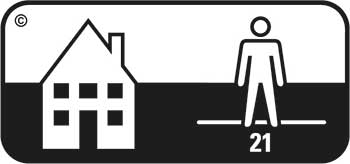
Class 21
For areas with little or occasional use (light to moderate)
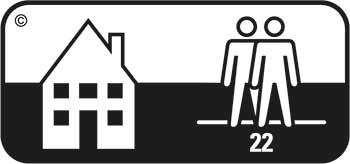
Class 22
For areas with medium use (normal)
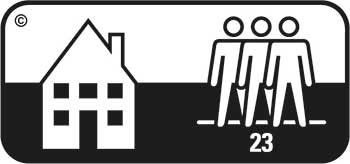
Class 23
For areas with intensive use (heavy)
Classifications for Commercial use
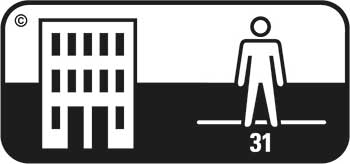
Class 31
For areas with normal commercial use
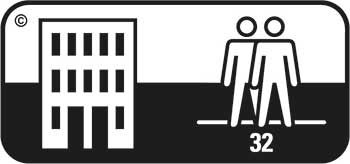
Class 32
For areas with medium public traffic
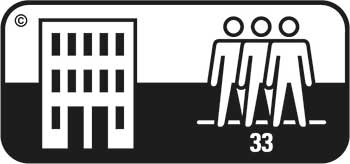
Class 33
For areas with heavy public traffic
Luxury Classes
Within each of the Domestic and Commercial carpet classifications described, there is a further classification known as the ‘Luxury Class (LC)’ which gives an indicator of comfort. It is depicted using ‘crowns’ and refers to the surface of the carpet regarding how soft and comfortable underfoot it is. The higher the number of crowns, the more comfortable.
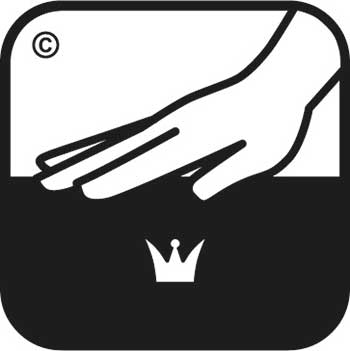
Luxury class LC 1
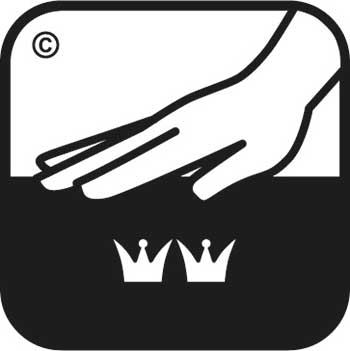
Luxury class LC 2
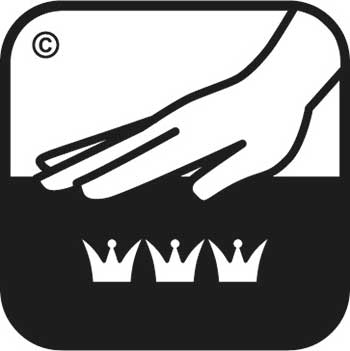
Luxury class LC 3
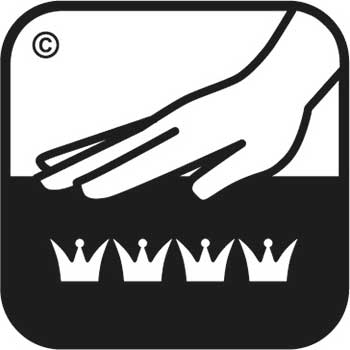
Luxury class LC 4
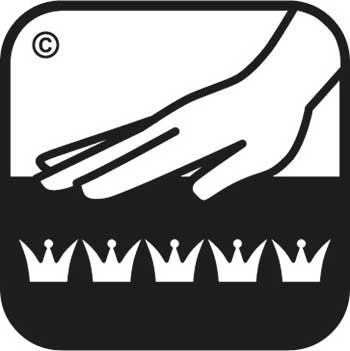
Luxury class LC 5
Further additional attributes
Suitable for chair castors
Office chairs which have castors can cause extreme damage to the surface( pile) is the carpet, therefore only those products which have passed a ‘castor chair’ test are suitable for use in any office – either a commercial premises or a home office.
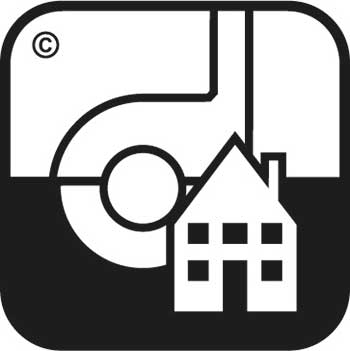
Occasional use
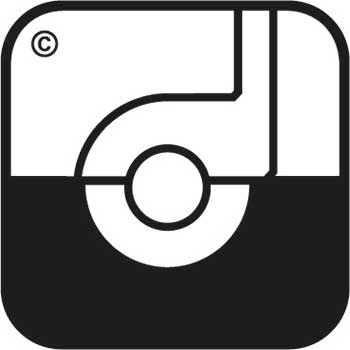
Permanent use
Suitable for stairs
When a carpet is used on stairs, it is subject to heavy wear especially on the edges of the steps (also known as stair nosings). Only those products that have one of the following two symbols are suitable for use on stairs.
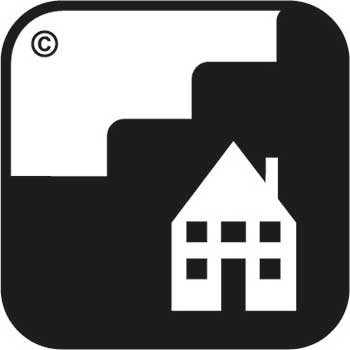
Occasional use
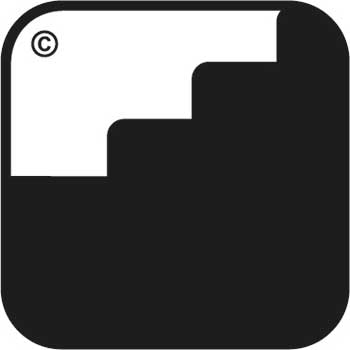
Permanent use
Cutting edge
The symbol indicates that the cut edges of the textile floor covering will not fray which is particularly important for loop pile carpets.
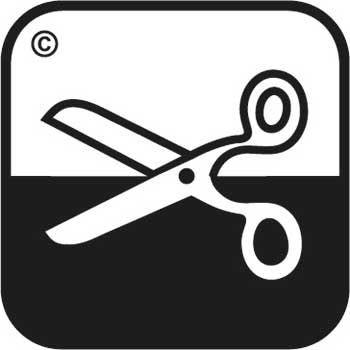
Lightfastness / Light reflection
Direct or indirect exposure to sunlight, and sometimes other forms of light, can cause colours to fade. The pictogram shown here under EN ISO 105-B02 means that the product meets the basic requirements for light fastness (≥5, for pastel shades ≥4).
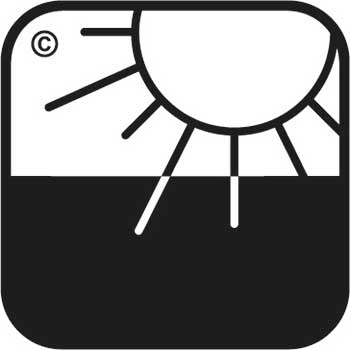
Lightfastness
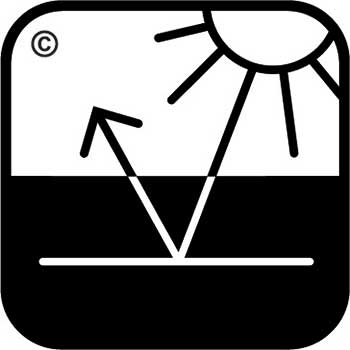
Light Reflection
Acoustic properties / Sound absorption
This symbol can be used if the textile floor covering has been tested and meets the necessary level of sound absorption, the value must then be shown on the technical data sheet. Sound absorption relates to the actual impact sound and also the reduction of impact noise. Generally textile floor coverings have very good impact sound and sound insulation properties.
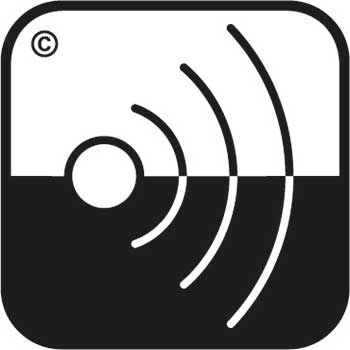
Sound absorption,
Specification in db
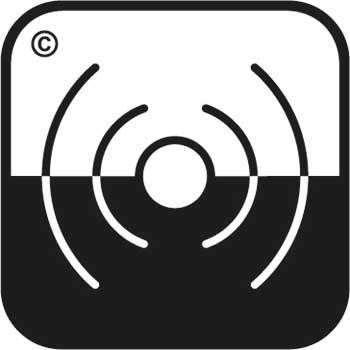
Impact sound absorption,
Specification in db

Reduction of impact noise,
Specification in db
CE labelling for textile floor coverings
In addition to the basic classifications of performance and comfort, further attributes are also given pictograms, or graphic images, depicting performance levels, environmental considerations, and additional suitability for certain areas. Some of these form part of the requirements of the Construction Products Act and are therefore classified as a ‘declaration of performance’, otherwise known as a CE label. These appear below.
CE marking
In Europe, all textile floor coverings must have a CE label which must be visible on the packaging, plus either in any technical data sheets or in the declaration of performance of the carpet. The CE label therefore defines the level to which a product meets standards on health, safety and energy. Without the mark, products cannot be sold within the EU. However, the abbreviation “CE” is not uniform across the EU and is sometimes referred to as EN which is “Certified Europe” or FR “Conformité Européenne” in France.
The EN standards 13442/14041 indicate the methods for testing and labelling textile floor coverings across Europe. Each country has their own system. In Germany, for example, it has been implemented within the Construction Products Act which outlines product-specific requirements as follows:
- Fire behaviour / fire protection
- mechanical strength and stability (formerly: slip resistance)
- Hygiene, health and environment
- Security of use
- Sound insulation
-
Energy saving and thermal insulation
Fire behaviour and classifications
Building materials are generally classified according to their fire behaviour and the tests which determine the level of fire protection are as follows:
- non-combustible
- flame retardant
- normal flammability
- inflammable
The European standard EN 13501-1 grades floor coverings further and creates classifications according to the level of combustion: for example, A is non-combustible and F is highly flammable. Textile floor coverings are also marked with the abbreviation “fl” and are mainly classified as B-fl, C-fl and E-fl. B-fl is the most stringent fire classification for a textile floor covering and is only required in areas with special requirements such as fire escape routes in hotels, or specific rooms in public buildings and offices. In most cases within the private sector, E-fl is usually sufficient. Easily recognisable pictograms are used to indicate the classification on different products.
Textile floor coverings are also classified according to how they are installed in relation to the floor itself. Abbreviations are used to indicate the installation method by which the(textile) floor covering was tested, as follows:
-
L = loose laid
-
G = glued
-
CS = combustible substrate
-
NCS = non-combustable substrate
You can find more information about fire classes and textile floor coverings here.
Typical pictograms representing fire classifications
For clarity, the only examples shown are those which explain the individual components of the fire class.
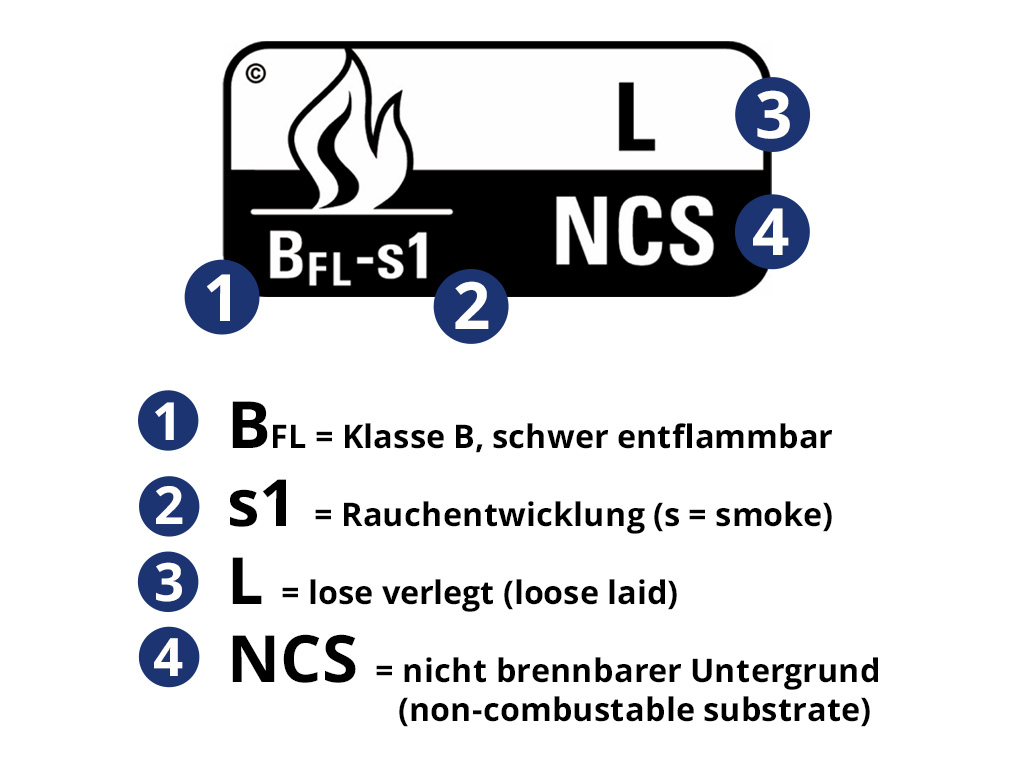
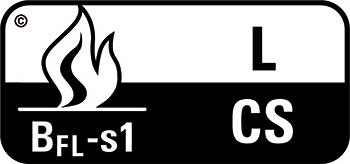
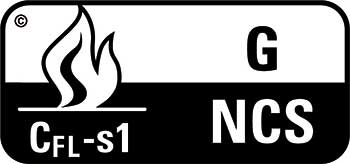
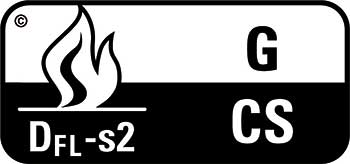
Conductivity
According to EN 14041, textile floor coverings are considered to be conductive if the contact resistance or the surface resistance ≤109 Ω is specified. This is particularly important in areas where a conductive floor covering is required to prevent electrostatic discharges, such as operating theatres, rooms with high-frequency surgical machinery or computer rooms.
Definitions according to EN 14041:
- Electrostatic dissipative / dissipative floor coverings: Contact resistance ≤109 Ω (ISO 10965)
-
Electrically conductive floor coverings: Contact resistance ≤106 Ω (ISO 10965)
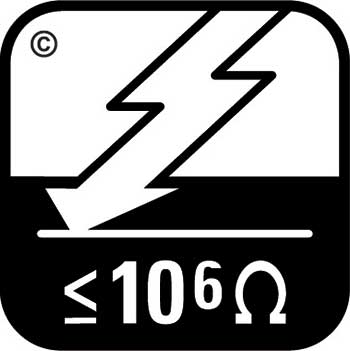
Electrically conductive floor covering
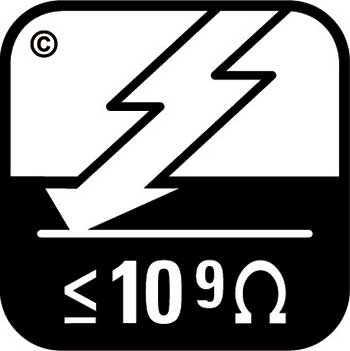
Electrostatic dissipative floor covering
Antistatic
The symbol indicates that any electrical charge that may be generated by a person is discharged directly from the floor covering.

Slip resistance
The EN 14041 standard specifies that carpets must meet certain safety requirements. This standard also defines slip resistance. Textile floor coverings must therefore have a dynamic coefficient of friction >0.3 when dry and clean. If this is the case, the product can be marked with the symbol “DS”. If this value is not achieved, the product must be marked with the symbol NPD (No Performance Declared; i.e. there is no information available regarding slip resistance.
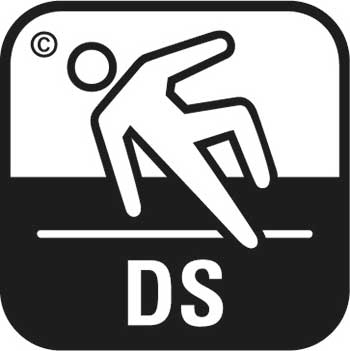
DS (declared Slip)
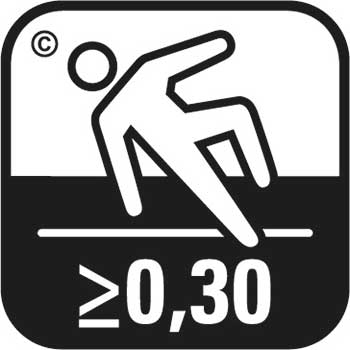
DS (declared Slip) ≥0,3
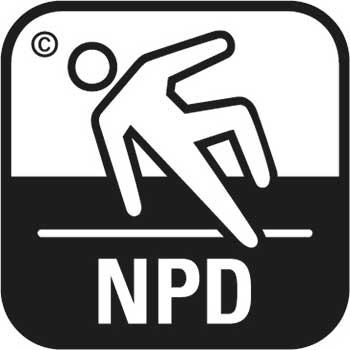
NPD (No Performance Declared)
Formaldehyde emission
Formaldehyde can be detected by emission tests. It may be present in small quantities as a contaminant from the environment so is of natural origin, as a reaction during production, or as a component of the product. Any textile floor coverings containing formaldehyde, which is either produced or added during production, must be tested. After testing, and according to ENV 717-1 or ENV 717-2, floor coverings containing formaldehyde are classified as follows in either E1 (ENV 717-1 ≤0.13 mg/m³ and ENV 717-2 ≤3.5 mg/m²h) or E2 (ENV 717-1 >0.13mg/m³ and ENV 717-2 >3.5; <8.0 mg/m²h). If a floor covering has had no materials containing formaldehyde added during production or subsequent processing, this test is not necessary, however they may still be classified as E1 without testing.
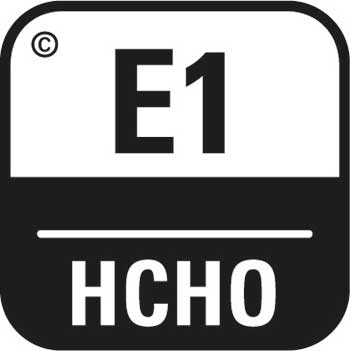
Emission class E1
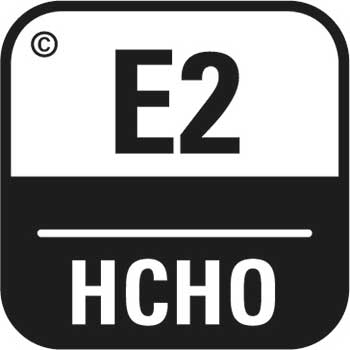
Emission class E2
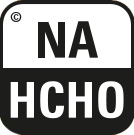
No formaldehyde added (NA = not added)
Gehalt an Pentachlorphenol
Daher ist der Gehalt an PCP in Bodenbelägen reguliert. Das Piktogramm DL (PCP) zeigt an, dass der Gehalt and PÜCP unterhalb der Nachweisgrenze (DL = Detection Limit) liegt.
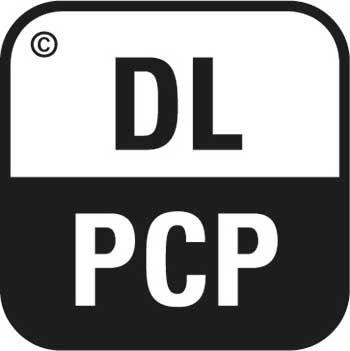
unterhalb der Nachweisgrenze
Thermal conductivity
When installing a textile floor covering and underfloor heating is in use, the thermal resistance of the carpet should be as low as possible. EN 12667:2001 standard states it should be at least 0.5 m²K/W. This Pictogram indicates whether the floor covering is suitable for use with underfloor heating.
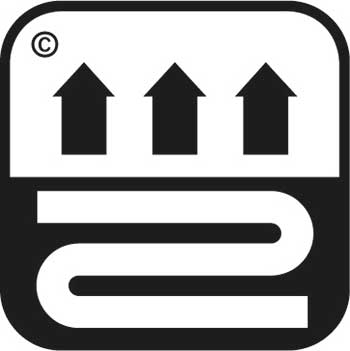
altes Piktogramm
Fussbodenheizung, geeignet

Wärmeleitfähigkeit
bei 23 °C
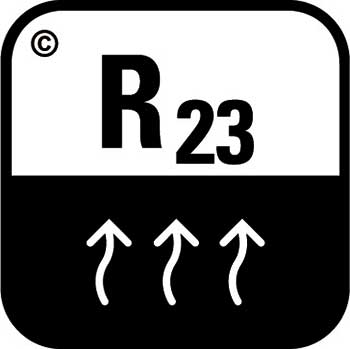
Wärmedurchlasswiderstand
bei 23° C
Other pictograms and attributes
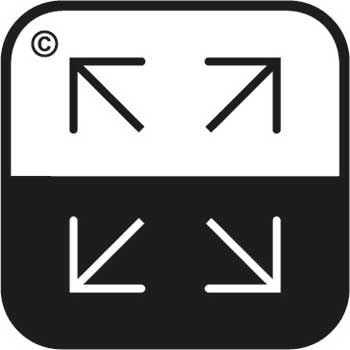
Dimensional stability
Due to the nature of the product, carpet tiles, which are often loose laid, must meet additional dimensional stability requirements. This especially relates to any shrinkage and expansion which might occur over time or in relation to the floor on which they are installed.
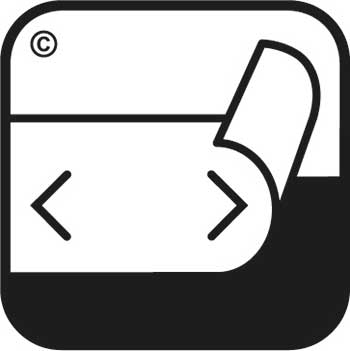
Roll length
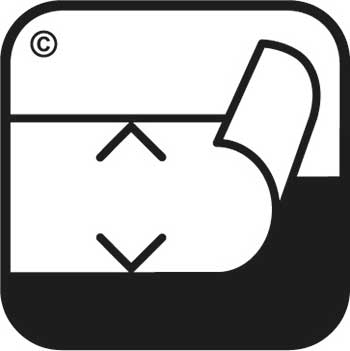
Roll width
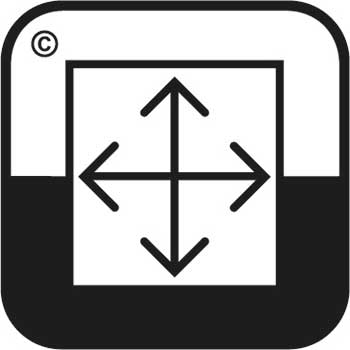
Dimension: Panel size
Information on the size of a single carpet tile.
Glossary of terms
Some of the terms on our website are abbreviated for simplicity. See below for the full list.
-
AgBB = Committee for the Health Evaluation of Building Materials (German: Ausschuss zur gesundheitlichen Bewertung von Baumaterialien; further informationen)
-
CE label = Conformité Européenne (FR); European Conformity
-
EPD = Environmental Product Declaration
-
FCSS = Floor Covering Standard Symbols
-
GUT = Gemeinschaft umweltfreundlicher Teppichboden e.V.
-
IAP = Indoor Air Pollution
-
IAQ = Indoor Air Quality
-
LCI = Lowest Concentration of Interest
-
POP = Persistant organic Pollutants
-
PRODIS = Product Information System
-
REACH = Registration, Evaluation, Authorisation and Restriction of Chemicals
-
SVHC = Substance of Very High Concern
-
VOC = Volatile Organic Compounds
-
LCA = Life Cycle Assessment